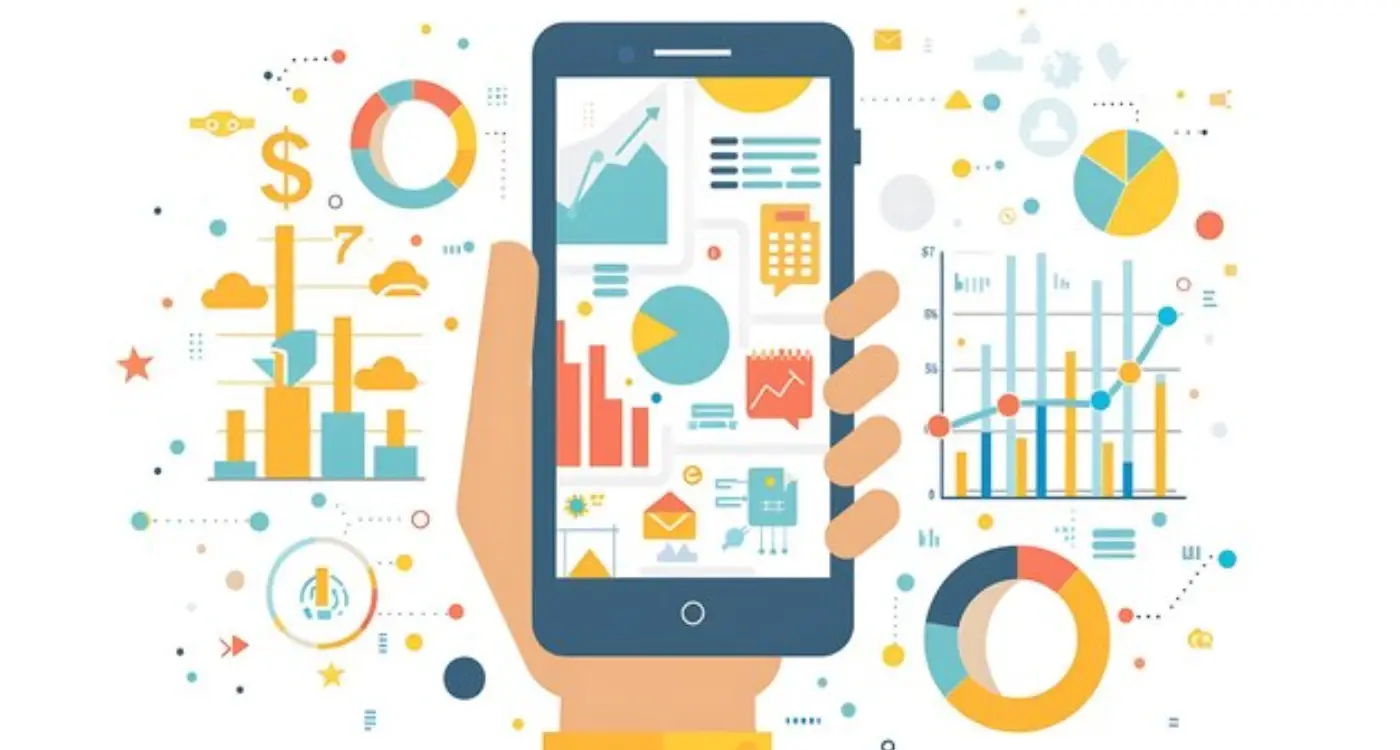What Tools Make App Feasibility Research Faster?
Spending months researching whether your app idea will actually work is one of the biggest frustrations in mobile development. I've watched brilliant entrepreneurs burn through their savings while manually gathering market data, crunching numbers on spreadsheets, and trying to figure out if their concept has legs. It's painful to watch, honestly—especially when the right feasibility research tools could cut that timeline from months to weeks.
The thing is, most people approach app feasibility research like it's still 2010. They're doing everything by hand, calling it "thorough research" when really they're just being inefficient. Sure, there's value in understanding your market deeply, but there's no point spending three months on research that proper tools could help you complete in three weeks. The mobile app landscape moves too fast for that kind of approach.
The difference between a successful app and a failed one often comes down to how quickly you can validate your assumptions and pivot when needed.
What I've learned after years of helping clients navigate this process is that speed matters more than perfection in feasibility research. You need to gather enough data to make informed decisions, not enough data to write a PhD thesis. The right mix of market research platforms, financial analysis software, and technical testing tools can give you a clear go/no-go decision without the endless delays. That's what we're going to explore in this guide—the specific tools and techniques that will help you validate your app idea faster, cheaper, and with more confidence than traditional methods allow.
Market Research Tools That Save Weeks
When I first started doing app feasibility research, I'd spend weeks manually gathering data from different sources, trying to piece together market insights like some kind of digital detective. These days? There are tools that can compress months of research into just a few days—and honestly, some of them are so good they make me wonder what I was doing with all that time before!
Google Trends remains one of my go-to starting points; it's free and gives you a real sense of whether people are actually searching for solutions in your space. But here's where it gets interesting—I pair this with App Annie (now data.ai) to see what's happening in the app stores. You can track download numbers, revenue estimates, and user ratings for competitors without having to guess. Its not perfect data, but it's a bloody good starting point.
For survey research, I use Typeform or SurveyMonkey to validate ideas quickly. You know what? Sometimes the best insights come from asking potential users directly rather than assuming we know what they want. I'll usually run a quick survey alongside some Facebook or Google ads to reach my target audience—costs maybe £50-100 but saves weeks of guesswork.
Social Listening Tools
Mention.com and Brand24 are brilliant for understanding what people are actually saying about problems in your market. I've discovered entire app opportunities just by monitoring complaints about existing solutions on Twitter and Reddit. People are surprisingly vocal about their frustrations online, and that's pure research gold.
The key is combining multiple tools rather than relying on just one data source. Each tool gives you a piece of the puzzle, and together they create a picture that would take weeks to build manually.
Financial Analysis Software That Works
When it comes to working out if your app idea makes financial sense, spreadsheets just don't cut it anymore. I mean, sure, you could spend hours building complex formulas in Excel, but there are proper tools designed specifically for this job that'll save you weeks of work and give you much more accurate results.
The financial side of app feasibility isn't just about "will this make money?"—it's about understanding your development costs, user acquisition expenses, revenue streams, and the timeline to profitability. Getting this wrong is expensive, and I've seen too many projects fail because the numbers were based on wishful thinking rather than solid analysis.
Tools That Actually Help
For proper financial modelling, I recommend looking at tools like PlanGuru for detailed cash flow projections, or LivePlan if you need something more straightforward. Both handle the complex calculations around user lifetime value, churn rates, and acquisition costs that are specific to mobile apps. They're not free, but they're a fraction of what you'd spend fixing financial assumptions later.
Don't forget to factor in platform fees—Apple takes 30% of in-app purchases for the first year, then 15% after that. Google Play has similar rates. These fees can completely change your unit economics if you're not accounting for them properly.
What I particularly like about these tools is how they handle scenario planning. You can model optimistic, realistic, and pessimistic outcomes side by side, which gives you a proper understanding of the financial risks involved. The built-in templates for SaaS and mobile apps save hours of setup time too.
- PlanGuru - Comprehensive financial modelling with mobile app templates
- LivePlan - User-friendly interface with industry benchmarks
- Fathom - Good for comparing different business models
- Float - Excellent cash flow forecasting capabilities
The key is choosing software that can handle the specific financial patterns of mobile apps—things like freemium conversion rates, seasonal usage spikes, and the relationship between user engagement and revenue.
Technical Feasibility Testing Platforms
Right, let's talk about the tools that help you figure out if your app idea can actually be built without breaking the bank or your developers sanity. After years of watching perfectly good ideas crash and burn because nobody checked if they were technically possible, I've learned that feasibility testing isn't optional—it's survival.
The first thing you need to understand is that technical feasibility isn't just about whether something can be built. It's about whether it can be built well, maintained properly, and scaled when your user base grows. I've seen too many apps that technically "work" but fall apart the moment they get real traffic.
Cloud Testing and Infrastructure Platforms
AWS Free Tier is your best friend for initial testing. You can spin up servers, test database performance, and even run load tests without spending serious money. Firebase is brilliant for rapid prototyping—you can test real-time features, user authentication, and cloud storage in minutes rather than days.
For mobile-specific testing, BrowserStack lets you test your app concept across different devices and operating systems. Trust me, what works on your shiny new iPhone might crash spectacularly on an Android device from three years ago.
API and Integration Testing
Postman is absolutely essential for testing third-party integrations. If your app needs to connect to payment processors, social media platforms, or any external services, you need to know these connections work reliably before you build anything.
- Test API response times under different loads
- Check data format compatibility
- Verify authentication and security protocols
- Monitor integration costs at scale
- Document all technical limitations
The key is testing early and testing often. These platforms help you identify technical roadblocks before they become expensive problems. Better to spend a week testing feasibility than six months building something that doesn't work properly.
Competitor Analysis Made Simple
Right, let's talk about competitor analysis—something that honestly doesn't need to be as complicated as most people make it. I've seen clients spend months trying to analyse every single app in their space when they could have gathered the same insights in a few days with the right tools.
App Annie (now data.ai) is probably the most well-known tool for app market intelligence, but it's not the only game in town. SimilarWeb gives you decent insights into app performance and user engagement without breaking the bank. What I really like about these platforms is how they show you download estimates, revenue data, and user demographics—basically everything you need to understand if there's room in the market for your idea.
Quick Analysis That Actually Matters
Sensor Tower is another solid option that I use regularly for feasibility research. It's particularly good at showing you how competitors are doing with their app store optimisation and which keywords they're ranking for. This stuff matters because if everyone in your space is fighting over the same keywords, you'll need a bigger marketing budget to compete.
The biggest mistake I see is people trying to analyse 50 competitors when they should focus on the top 5 that actually matter to their target market
For a more hands-on approach, I always tell clients to actually download and use their competitors' apps. Sounds obvious? You'd be surprised how many people skip this step. Take screenshots, note the user flow, see what features they have that you don't. Sometimes the best insights come from simply experiencing what users are currently dealing with. Mobile Action is great for tracking these kinds of feature updates and seeing how competitors evolve their apps over time.
User Research Tools For Real Insights
Getting inside your users' heads isn't just important—its make or break for your app. I mean, you can build the most technically brilliant app in the world, but if nobody actually wants to use it? Well, you've basically built an expensive digital paperweight.
The thing is, most people skip proper user research because they think they know what users want. But here's what I've learned over the years: what people say they want and what they actually do are often completely different things. That's why you need tools that show you real behaviour, not just opinions.
Survey Tools That Actually Work
For quick insights, Typeform and Google Forms are your best friends. Typeform makes surveys feel more like conversations, which means people actually finish them. Google Forms is free and does the job well enough for most research needs. But honestly? Keep your surveys short. Nobody wants to answer 50 questions about your app idea.
Interview and Testing Platforms
UserInterviews helps you find real people to talk to—and I cannot stress enough how valuable this is. You can filter by demographics, usage patterns, all sorts of criteria. For remote testing, Maze and UsabilityHub let you watch how people interact with your prototypes without breathing down their necks.
Here are the user research tools I actually use:
- Typeform - engaging surveys that people complete
- UserInterviews - finding the right people to interview
- Calendly - scheduling interviews without endless email chains
- Maze - remote prototype testing
- Hotjar - heatmaps and user recordings
- Airtable - organising research findings
The key thing? Start talking to potential users early and often. Every conversation will teach you something you didn't expect—and probably save you from building features nobody wants.
Prototyping Software For Quick Validation
Right, let's talk about prototyping tools—honestly, this is where the magic happens in app feasibility research. I've seen too many clients waste months building features nobody actually wants because they skipped proper prototyping. It's a bit mad really, but people still think prototyping is just for designers.
Figma has become my go-to for most projects; it's free, works in any browser, and lets you create interactive prototypes that feel surprisingly real. You can test user flows, gather feedback, and spot problems before writing a single line of code. The collaboration features are brilliant too—stakeholders can comment directly on designs, which saves endless email chains.
For more complex app interactions, I often use Framer or Principle. These tools let you create prototypes with proper animations and micro-interactions that really help clients understand how their app will feel to use. Sure, there's a learning curve, but the time investment pays off when you avoid building the wrong thing.
Start with paper sketches before jumping into digital tools. I know it sounds old-fashioned, but sketching forces you to focus on core functionality without getting distracted by colours and fonts.
Quick Validation Workflow
- Sketch your main user flows on paper first
- Create low-fidelity wireframes in Figma
- Add basic interactions and transitions
- Test with 5-8 potential users
- Iterate based on feedback
- Create high-fidelity prototype for stakeholder sign-off
The key thing about prototyping for feasibility research is speed over perfection. You're not building the final product—you're testing assumptions and validating ideas quickly. A rough prototype that gets feedback is worth more than a pixel-perfect design that nobody's actually tried to use.
When you're working with multiple stakeholders on app feasibility research, keeping everyone aligned can be a proper nightmare without the right tools. I've seen projects derail because the marketing team was working with different assumptions than the development team—and nobody realised until weeks later.
Slack remains my go-to for day-to-day communication, but honestly? Its not just about the messaging. The real power comes from creating dedicated channels for different aspects of your research. Set up separate channels for market research findings, technical discussions, and financial updates. This way, your UX researcher isn't drowning in backend architecture debates, and your CFO can focus on the numbers without wading through user feedback.
Document Collaboration That Actually Works
Notion has become absolutely brilliant for feasibility research projects. You can create a central hub where all your research lives—market analysis, competitor profiles, technical requirements, financial projections—everything in one searchable space. The best part? You can assign different team members to own different sections while keeping everything connected.
Google Workspace is still solid for real-time document editing, especially when you need multiple people contributing to feasibility reports simultaneously. But here's what I've learned: create templates for everything. Standard formats for competitor analysis, technical assessment checklists, market research summaries. It saves hours of formatting time and ensures nothing gets missed.
Visual Collaboration for Complex Ideas
Miro or FigJam work wonders for mapping out complex relationships between different feasibility factors. When you're trying to visualise how market size affects technical requirements, which then impacts financial projections, these tools help everyone see the bigger picture. Plus, they're brilliant for remote brainstorming sessions when your team is scattered across different locations.
Risk Assessment Templates That Actually Help
Right, let's talk about risk assessment templates—and I mean the ones that actually work, not those generic spreadsheets that make you want to throw your laptop out the window. After years of watching clients struggle with overly complex risk matrices, I've learned that the best templates are the ones people will actually use. You know what I'm talking about? Those simple, practical tools that don't require a PhD to understand.
The template I recommend most breaks risks down into three basic categories: technical risks (can we actually build this thing?), business risks (will anyone care once it's built?), and resource risks (do we have the time, money, and people to see this through?). Each risk gets a simple rating—high, medium, or low—for both likelihood and impact. None of this fancy scoring nonsense that nobody remembers how to calculate.
What Makes Templates Actually Useful
Here's the thing about risk assessment in mobile app development: it's not about predicting the future perfectly; it's about identifying the big stuff that could derail your project. The templates that work best include specific examples relevant to app development. Things like "iOS approval delays," "key developer leaves mid-project," or "competitor launches similar app first."
The best risk assessment isn't the most comprehensive one—it's the one that helps you sleep better at night knowing you've thought through the big scary stuff
I always tell clients to focus on the risks they can actually do something about. Sure, Apple might change their App Store guidelines tomorrow, but you can't control that. What you can control is having a solid backup plan for key team members or setting realistic timelines that account for the inevitable technical hiccups. That's where good templates really shine—they force you to think about mitigation strategies, not just problems.
After eight years of building apps and watching countless projects succeed or fail, I can tell you that the right research tools make all the difference. But here's what I've learned—it's not about having every single tool out there; it's about picking the ones that actually move the needle on your project.
The tools we've covered in this guide aren't just nice-to-haves. They're the difference between spending months going in circles and getting clear answers in weeks. I've seen too many brilliant app ideas crash and burn because someone skipped the research phase or tried to do everything manually. Don't be that person.
Start with one tool from each category we've discussed. You don't need the most expensive option—you need the one that fits your project and budget. A startup with £5,000 has different needs than a Fortune 500 company with unlimited resources, and that's perfectly fine. The key is being smart about where you spend your time and money.
What really matters is that you use these tools to ask the right questions: Is there actually a market for this? Can we build it within budget? What are our competitors doing better? How do real users behave? These aren't just box-ticking exercises—they're the foundation of every successful app I've ever worked on.
The mobile app world moves fast, but good research never goes out of style. Whether you're validating your first app idea or your tenth, these tools will help you make smarter decisions faster. And in an industry where user acquisition costs keep rising and competition gets fiercer every day, that speed and accuracy can make or break your project.
Share this
Subscribe To Our Learning Centre
You May Also Like
These Related Guides

What Data Sources Strengthen App Feasibility Research?

Why Do App Feasibility Studies Matter for New Businesses?



